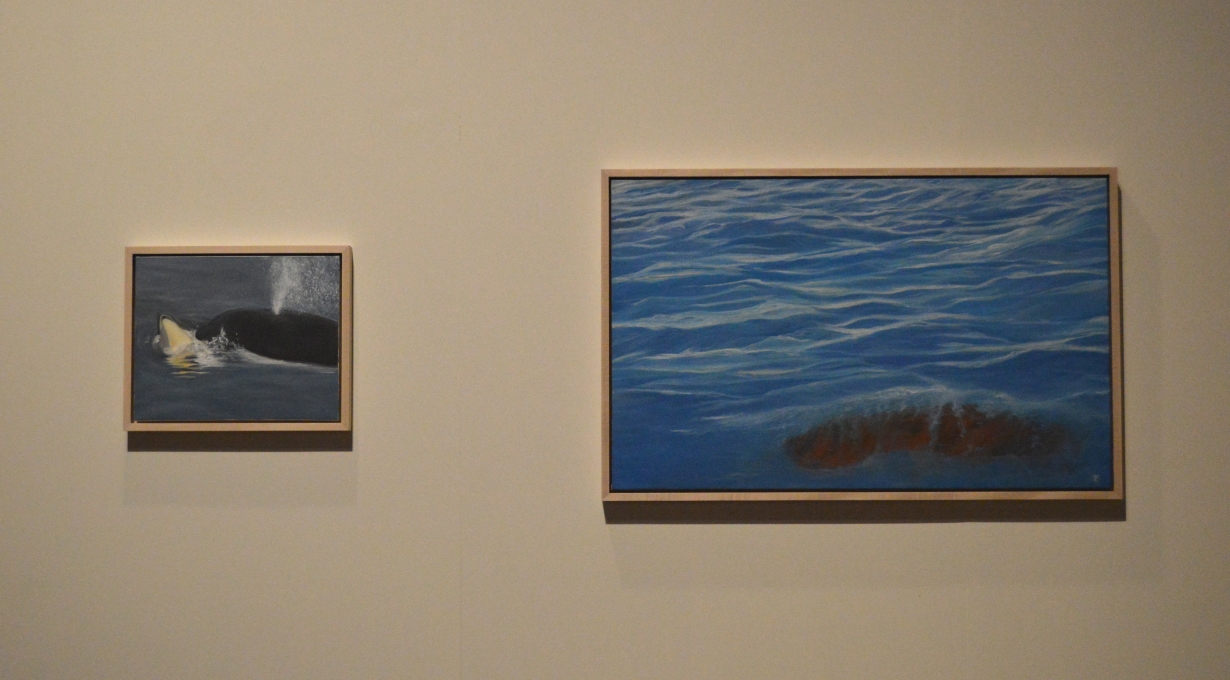Meet the Artists: Fredericka Foster

Fredericka Foster's Mediterranean Sanctuary and J-35 Pushing Hear Dead Calf appear in the Value of Sanctuary: Building a House Without Walls, now on view in the Cathedral.
What were you thinking about when creating this piece of work?
I had been making meditative paintings of water, intending to pull both me as the maker and any viewer into the painting, thus attempting to move beyond the conceptual mind and increase our identity with this critical element for our lives. Yet the tragedy we called Hurricane Katrina had begun to affect my thinking. In 2011, a powerful earthquake hit Japan creating a tsunami of biblical proportions, with the resultant Fukushima Nuclear Plant disaster and stories of Japanese personal items washing up on the American West Coast. Thus, the clothing in water series began. Increasing instability in Africa and the Middle East led to more and more people risking their lives to get to Europe. When I began Mediterranean Sanctuary, I was thinking about the thousands of people who had drowned in the Mediterranean Sea in overloaded small boats as they struggled to get to Greece, Italy, and Spain.
Had you spent any time considering the word “sanctuary”?
I frequently thought about the word Sanctuary while guest curating The Value of Water exhibition at the Cathedral in 2011. The Sanctuary is the area around the high altar in the Cathedral—the place kept sacred for ritual and services—and yet the entire Cathedral gives one a feeling of safety. The word came into real focus for me when I met the editors of a book, Sentiments and saw their Sanctuary Manifesto at PS 1. This group is forming an extended community to define and create “Sanctuary” for any and all persons undergoing cultural passages, a term they prefer to the use over “immigrants” or “refugees” to describe this complex situation affecting millions of people.
What were your first impressions of the Cathedral?
I visited the Cathedral in 1990, right after we moved to New York. I had visited many Cathedrals in Europe, and I had no idea that we had such an extraordinary building in NYC; indeed, it is the largest Gothic cathedral in the world and, like other great Cathedrals, takes hundreds of years to build. Indeed, it was a true sanctuary for me as I adapted to the intensity of New York.
What is your favorite unexpected place to view art?
When we visited Australia, we visited the Museum of New Art in Hobart, Tasmania—a completely unexpected site for an eclectic museum defined by the wide-ranging mind of David Walsh with the help of his curatorial team. It is reachable only by boat.
What artists or artworks are you inspired by?
I am inspired, of course, by the great painters of water: Albert Bierstadt, Frederic Edwin Church, Marsden Hartley, Claude Monet. And J. M. W. Turner. I like Roni Horn’s photographs, another artist seeing from a bird’s-eye view, and the wonderful water etchings and drawings of Vija Celmins. Pat Steir’s paintings absorb me, as does the work of Arthur Dove. I spend a great amount of time looking at the Dutch master painters, as well as contemporary surrealists such as Mark Tansey and Robert Longo.
What is your Sanctuary?
Because I have lived a life rich in change, I have learned to create an internal sanctuary, somewhere near the solar plexus, as part of my regular life and Buddhist practice. A deep breath can bring me to a feeling of safety and openness.